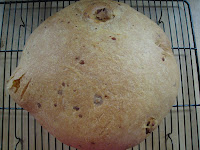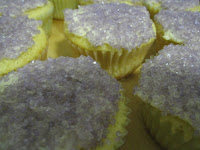
This bread begins with a sponge composed primarily of warm milk, flour and yeast. When it is mixed it has the consistency of pancake batter, though it significantly thickens after standing:

The sponge is mixed with more flour, water and salt, but no more yeast. All of the yeast in this recipe is contained in the sponge. Once this is fully mixed, soft butter is incorporated into the dough:

Once the dough is almost fully kneaded, the meat and then the cheese is folded in:

Here is the dough after a first rise, in a cake pan, the closest to a traditional pan I own (sometimes this bread is baked in coffee cans!):

I pulled the towel off of the dough mid-rise for a progress check:

And here is the dough ready to bake:












































